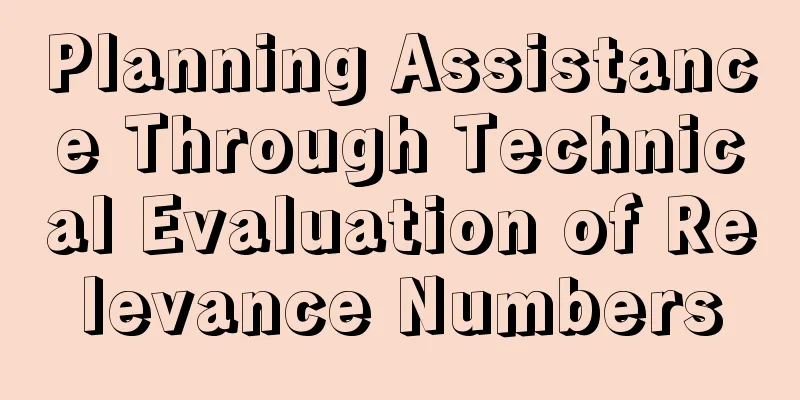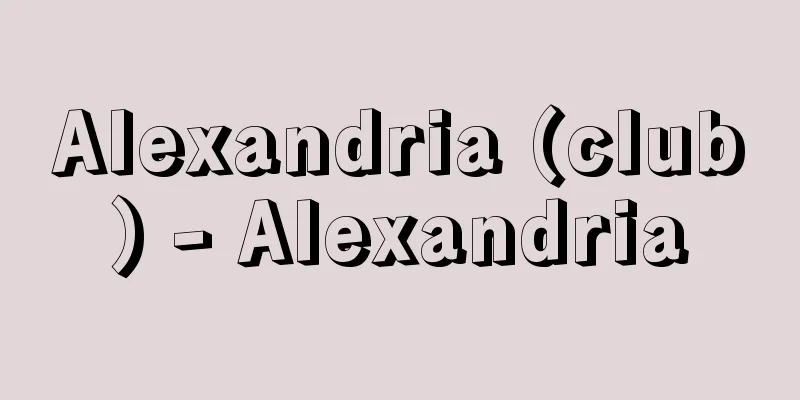Censorship - Genrontosei

|
Censorship is the restriction by political power of the expression and distribution of information, opinions, or ideas by citizens through written, audio, image, etc. Censorship of speech varies in its form, such as the object and method of control, depending on the nature of the political power that controls it (for example, feudal, democratic, dictatorial, communist, etc.) and the purpose of the control (for example, political, military, religious, etc.). In general, it targets various expressions that the political power judges to be harmful and undesirable for the formation and maintenance of a certain political and social order that it intends. However, since expression is inseparably related to the medium (media) through which it is carried, in reality, expression and media are the object of control as one. This is why censorship of speech takes on the appearance of media control. The media for such expressions are mainly mass media such as newspapers, magazines, books, movies, and broadcasting, but it can also extend to so-called intermediate media such as plays, performances, rallies, and demonstrations, and even rumors and personal conversations. [Yoshimi Uchikawa] Methods and mechanismsThe method of control is generally based on special laws that stipulate censorship of speech, but the actual concrete means of guaranteeing this vary. For example, commonly used methods include systems for obtaining permission to publish newspapers, magazines, books, etc., broadcasting licenses, systems for obtaining prior permission for assemblies and demonstrations, systems for censoring articles and broadcast content of each mass media, and scripts and screenplays for movies and plays, administrative sanctions that can order the prohibition of sale, suspension of publication, publication, broadcasting, screening or performance, and assemblies and demonstrations in the event of a violation, and judicial sanctions that can arrest and punish those involved. There are also many examples of control over the allocation of raw materials for mass media, such as paper, film, and radio waves, the forced abolition or consolidation of mass media companies, and supervision and intervention in their operations, finances, and personnel. Censorship of speech is usually carried out through the government's security police organization, but in special situations such as wartime, or in totalitarian countries such as fascists or communist countries, government agencies that are in charge of speech and information dissemination, such as the Ministry of Information, Ministry of Propaganda, and Information Bureau, are often established. Furthermore, there are many cases where special political and ideological police organizations accompany these. Censorship of speech is often carried out simultaneously with corresponding propaganda. For example, during wartime, on the one hand, anti-war speech is strictly controlled and blocked, while on the other hand, the promotion of a "holy war" consciousness is promoted. Since the two are closely linked in function, some people consider the two to be integrated as propaganda in the broad sense, with censorship being its negative aspect and propaganda being its positive aspect. [Yoshimi Uchikawa] historyChinaThe history of censorship of speech in the sense of political power cracking down on the public's activities of expression is thought to be as old as the state or political power itself, but in terms of historical fact, the oldest example is that of China's Qin Shi Huang (reigned 247-210 BC). Following the advice of his minister Li Si, he decided to crack down on people and ideas that went against the Qin dynasty's political policies, and he had the people submit all books except for medical books, divination books, and agricultural books, which he then burned ("burning books"). At the same time, he arrested many Confucian scholars who were spreading such ideas, and is said to have buried over 460 of them alive ("burying scholars"). [Yoshimi Uchikawa] Europe and the United StatesIn Europe, the oldest example of restrictions on reading, authors, publishers, and sellers was the Index Librorum Prohibitorum , created in 1564, during the process of the Pope's crackdown on heresy against Catholicism from the 15th to the 16th century. In addition, during the conflict between the old and new religions, Pope Gregory XV founded the Sacra Congregatio de Propaganda Fide in 1622 with the aim of actively promoting the doctrines of Catholicism. It is said to be the first organized form of propaganda. As medieval society collapsed and the era of secular states began, censorship of speech also shifted from religious purposes to political purposes. During the absolute monarchy of the 16th and 17th centuries, censorship of speech was based on a system of patents (permissions) for printing and publishing and a system of prior censorship. Typical laws for this purpose include the Star Chamber Printing Ordinance of 1586 and the Patent Censorship Act of 1662 in England. After the establishment of a modern constitutional state, freedom of expression, including speech, publication, assembly, and demonstration, was guaranteed by the constitution as a fundamental right. However, political power enforced censorship when necessary. When Napoleon became president in a coup d'état, he first limited the number of political newspapers to 13 in 1800 and banned the publication of new ones. In 1804, when he became emperor, he forced the republican leading newspaper "Journal des Débats" (controversy newspaper) to change its title to "Journal de l'Ampire" (Imperial Newspaper) because it smelled of revolution. In 1811, he confiscated the paper and made it state-run. In the same year, he reduced the number of political newspapers to four and consolidated local newspapers to one per prefecture. In France, under the Third Republic, the "Law on Freedom of the Press" was passed in 1881, and newspapers finally began to enjoy stable freedom. Even in Britain, although censorship and other prior restraints on expression were no longer seen after the 18th century, the government continued to exercise control over speech through the application of laws such as the Stamp Duty (1712), which was known as a "tax on knowledge," and the Seditious Libel Act, which allowed the government to unilaterally punish criticism of the king or high-ranking government officials as defamation, regardless of the truth of the matter. In the 20th century, after the outbreak of World War I, each country began to place importance on the influence and role of mass media on public opinion, and established special information ministries and information departments to promote wartime censorship, including the censorship of military information. However, the qualitative change and complexity of war from armed conflict to total war made censorship of speech even more important. The United States, which maintained voluntary control during World War I, implemented systematic information management during World War II. The most systematic censorship of speech in the 20th century was carried out by Nazi Germany. In February 1933, shortly after coming to power, Hitler fabricated the Reichstag arson incident, suspended the Weimar Constitution, which guaranteed freedom of press and publication, by presidential decree, and banned the publication of approximately 180 Communist and Social Democratic newspapers. On May 10 of the same year, he also confiscated and burned anti-Nazism books and magazines, including those of Jewish and liberal left-wing parties. Meanwhile, in March of the same year, a Ministry of Public Propaganda and Enlightenment was established with Goebbels as the minister in charge, and in September, the State Cultural Agency Act established control agencies for each media and field, such as the State Press Agency, the State Publishing House, and the State Film Agency. The Press Journalists Act, enacted in October, stipulated journalistic qualifications and required journalists to register. Through such systematic control of speech and propaganda, Hitler gained the public's sympathy for the Nazis. Communist countries such as the former Soviet Union were characterized by strict censorship and propaganda aimed at strengthening and promoting communist ideology and eliminating anti-communist information thought. This characteristic basically applies to China today. Lenin's definition that newspapers are "not only collective propagandists and collective instigators, but also collective organizers" is still alive in China today, and is applied to broadcasting as well. There is no freedom of speech or information in the Western sense, and the "Prague Spring" movement (1968) by Czechoslovakian intellectuals who called for freedom of speech in the former Eastern European era was crushed by tanks of the Soviet army and other Warsaw Pact troops. In China, too, in the Second Tiananmen Square incident (1989), a student movement demanding democratization was suppressed by the military and public security police. [Yoshimi Uchikawa] JapanJapan's censorship of speech under the old regime from the Meiji Restoration to 1945 (Showa 20) was one of the strictest in the world, and it is no exaggeration to say that censorship was one of the causes that led Japan to become insanely ultranationalistic and militaristic. Censorship of speech peaked in the early Meiji period during the Freedom and People's Rights Movement, when criticism of the government was rampant, but at its height in 1882 (Meiji 15), there were records of 12 newspaper bans, 70 suspensions, 282 disbandings of public speaking meetings, and 53 speech bans. Even after the promulgation of the Constitution of the Empire of Japan (1889), many absolutist laws governing speech, such as the Newspaper Ordinance (which became the Newspaper Law in 1909), remained in place, and the freedom of speech and expression that was recognized "within the limits of the law" (Article 29 of the Constitution of the Empire of Japan) was extremely restricted and nonexistent. The distinctive feature of Japan's censorship of speech is that criticism of the Emperor System was strictly prohibited as a target of censorship, and that the Minister of Home Affairs was given broad discretionary administrative power as a method of censorship. The former became even more severe with the enactment of the Peace Preservation Law in 1925 (Taisho 14), which eradicated socialist movements and speech. The latter was applied very arbitrarily, and became even stricter during the fascist period after the Manchurian Incident, eradicating all anti-Emperor System and anti-militarist speech, including liberal speech. In 1940 (Showa 15), the Information Bureau was established as a central government agency for information and propaganda and censorship of speech. Furthermore, a series of censorship laws were enacted, including the National Mobilization Law (1938), the Film Law (1939), the Order Restricting Publication in Newspapers, etc. (1941), the National Defense Security Law (1941), and the Law for the Temporary Control of Speech, Publications, Assemblies, and Associations, etc. (1941). Mass media companies such as newspapers and magazines were forced into authoritarian corporate mergers, and by the fall of 1942, the number of daily newspapers had been reduced to just 55. Censorship became increasingly strict, with a succession of injunctions banning articles from publication. From the very beginning, the Japan Broadcasting Corporation (NHK) was under strong government supervision. It was as if the people's eyes, ears, and mouths were covered. The brutal censorship of speech came to an end with the tragic catastrophe of defeat in the war. After the Second World War, the Japanese Constitution guaranteed freedom of expression and prohibited censorship (Article 21). However, under the Allied Occupation, the Japanese people were placed under a new form of censorship. On September 19, 1945, the Supreme Commander for the Allied Powers (GHQ) issued a memorandum on newspaper regulations, known as the "Press Code." Based on this, pre-censorship of newspapers, magazines, and books was implemented, and pre-censorship of broadcasts was implemented through the "Radio Code" (memorandum dated September 22 of the same year), with the aim of eliminating any speech or information that was "harmful" to the achievement of the Occupation's objectives, including criticism of the Occupation Army. Postal censorship was also implemented. These censorship measures were ended by 1949. However, when the Korean War began (1950), against the backdrop of the Cold War between the United States and the Soviet Union, the publication of Japanese Communist Party newspapers, including "Akahata" (now "Akahata"), was suspended, and the so-called "Red Purge" was carried out, which aimed to exclude Communists from mass media companies. It was only after independence was achieved through the signing of a peace treaty in 1952 that Japan was able to break free from the censorship of speech imposed by the occupying forces. However, even after independence, there have been unofficial cases of individual cases of pressure on freedom of speech that resemble censorship, such as the cancellation of Nippon Television's 1965 program "The Story of the Vietnam Marine Battalion" in its coverage of the Vietnam War, and moves to enact legislation to protect secrecy. It is necessary to be wary of trends toward censorship of speech. [Yoshimi Uchikawa] "Freedom of Speech and Publication, by Ito Masami (1959, Iwanami Shoten)" ▽ "Modern History Materials 40 & 41: Mass Media Control, Commentary by Uchikawa Yoshimi (1973, 1975, Misuzu Shobo)" ▽ "Oppression of Speech Under Occupation, by Matsuura Sozo, Revised and Definitive Edition (1974, Modern Journalism Publishing Association)" ▽ "Japanese Journalism, edited by Uchikawa Yoshimi and Arai Naoyuki (1983, Yuhikaku)" [References] | | | | | | | |Source: Shogakukan Encyclopedia Nipponica About Encyclopedia Nipponica Information | Legend |
|
政治権力が国民の文字、音声、画像映像などによる情報、意見あるいは思想の表現行為や流通を規制すること。言論統制は、統制の主体たる政治権力の性質の相違(たとえば封建国家、民主主義国家、独裁国家、共産主義国家など)や、統制の目的の相違(たとえば政治的、軍事的、宗教的など)によって、統制の対象や方法などその態様に種々の違いがある。一般的には、政治権力の企図する一定の政治的・社会的秩序の形成や保持にとって有害で好ましくないと政治権力の側で判断した各種の表現が対象である。しかし、表現は、その乗り物である媒体(メディア)と不可分の関係にあるので、実際には表現とメディアが一体となった形で統制の対象となる。言論統制がメディア統制の様相を呈するゆえんである。そうした表現のメディアとしては新聞、雑誌、書籍、映画、放送などのマス・メディアが主であるが、演劇、演芸、集会、デモなどのいわゆる中間的メディア、さらにはデマ、個人的会話にまで及ぶことがある。 [内川芳美] 方法と機構統制の方法としては、言論統制を定めた特別法によるのが一般的だが、それを担保する実際の具体的手段は一様でない。たとえばよく用いられる手段としては、新聞・雑誌・書籍などの発行許可制度、放送の免許制度、集会・デモなどの事前許可制度、各マス・メディアの記事や放送内容、映画・演劇の脚本・台本などの検閲制度、違反事例に対して発売禁止、発行停止、発行禁止、放送禁止、上映・上演禁止、集会・デモの禁止などを命令できる行政処分制度や、関係者を逮捕し刑罰を科する司法処分制度などがある。さらには用紙、フィルム、電波などマス・メディア用の原料資源の割当て統制、マス・メディア企業の強制的な廃止・統合、業務・財政・人事に対する監督・介入などの例も少なくない。 言論統制は、通常、政府の治安警察機構を通じて行われるが、戦時などの特殊事態やあるいはファシズムなどの全体主義国家や共産主義国家では、情報省、宣伝省、情報局などの言論・情報宣伝を総括的に担当する政府機関が設置される場合が多い。さらにこれに特別な政治・思想警察組織が随伴している例も少なくない。言論統制は、多くの場合、それと見合うプロパガンダ(宣伝)と同時に行われる。たとえば戦時に一方で反戦的言論を厳しく統制し遮断しつつ、他方で「聖戦」意識の高揚を宣伝するというように。この両者は機能的に密接に連結しているので、この二つを広義のプロパガンダとして統合的にとらえ、言論統制をその消極的側面、宣伝を積極的側面とする考え方も行われている。 [内川芳美] 歴史中国政治権力が民衆の表現活動を取り締まるという意味での言論統制の歴史は国家または政治権力とともに古いと思われるが、史実としては、中国の秦(しん)の始皇帝(在位前247~前210)の例がもっとも古い。彼は大臣の李斯(りし)の献策をいれて、秦朝の政治方針に反する思想や人物を取り締まることとし、医薬書、卜筮(ぼくぜい)(占い)の書、農書以外のすべての書籍を民衆から提出させて焼き捨てる(「焚書(ふんしょ)」)一方、そういう思想を広めた儒学者たちを多数逮捕し、460余人を生き埋めにした(「坑儒(こうじゅ)」)とされている。 [内川芳美] 欧米ヨーロッパでは、15世紀から16世紀にかけてローマ教皇のカトリシズムに対する異端取締りが展開される過程で、1564年に作成された「禁書目録」Index Librorum Prohibitorumにより読書、著者、出版者、販売者などが規制された例がいちばん古い。また、新旧両教の対立過程で、1622年に教皇グレゴリウス15世が、カトリシズムの教義の積極的な宣伝を目的として「布教聖省」Sacra Congregatio de Propaganda Fideを創設しているのが注目される。組織化された宣伝の最初といわれている。中世社会が崩壊し世俗国家の時代になると、言論統制も宗教的目的よりも政治的目的を主とするものへ転化する。16~17世紀の絶対王政期には、印刷出版の特許(許可)制度および事前検閲制度を基幹とする言論統制が行われた。イギリスの1586年の星室庁印刷条令や1662年の特許検閲法などはそのための典型的な法令である。 近代的な立憲国家の成立後は、言論・出版や集会・デモなど表現の自由が基本権として憲法で保障されることになった。しかし政治権力は必要とあれば言論統制を強行した。ナポレオンはクーデターで統領となるや、1800年まず政論新聞を13紙に制限して新規の発行を禁止し、皇帝となった04年には共和派の有力紙『ジュルナール・デ・デバ』(論争新聞)を革命のにおいがするとして『ジュルナール・ド・ランピール』(帝国新聞)に改題を強制し、11年には同紙を接収して国営に移し、さらに同年政論新聞を4紙に減らし、地方紙を1県1紙に統合している。フランスでは第三共和政下の1881年「新聞自由法」が成立し、新聞はようやく安定的な自由を享受することになった。イギリスでも、18世紀以降も検閲など表現の事前抑制こそみられなくなったものの、たとえば「知識に対する課税」taxes on knowledgeといわれた印紙税(1712)や、事実の真偽にかかわらず国王や政府高官への批判を一方的に名誉毀損(きそん)として処罰できた治安妨害的誹毀(ひき)取締法Seditious Libel Actなどの運用によって、政府は言論統制の手綱を操った。 20世紀に入り、第一次世界大戦が始まると、各国ともマス・メディアの世論への影響やその役割を重視するようになり、情報省や情報部を特設して、軍事情報の検閲をはじめとする戦時言論統制を推進した。しかし、戦争の武力戦から総力戦への質的変化と複雑化は言論統制の重要度をよりいっそう高めた。第一次大戦では自主的統制のたてまえをとったアメリカも、第二次大戦時には組織的な情報管理を行った。20世紀にもっとも組織的な言論統制を行ったのはナチス・ドイツで、ヒトラーは政権獲得直後の1933年2月、国会放火事件をでっちあげて、新聞・出版の自由を保障したワイマール憲法を大統領令によって停止させ、共産党および社会民主党系新聞約180紙を発行禁止に付した。また同年5月10日、左翼系はむろんユダヤ系や自由主義系など反ナチズム系の図書や雑誌を没収して焼き捨てた。他方、同年3月ゲッベルスを担当大臣とする国民宣伝啓蒙(けいもう)省が新設され、9月には国家文化院法による国家新聞院、国家出版院、国家映画院など各メディア・分野ごとの統制機関が設置された。10月に制定された新聞記者法は記者資格を定め、記者に登録義務を課していた。こうした組織的な言論統制とプロパガンダによって、ヒトラーは民衆のナチスへの同調を調達した。 旧ソ連など共産主義国家では、共産主義のイデオロギーの強化鼓吹と反共的情報思想の排除を目的とした厳重な言論統制とプロパガンダが行われたのが特徴的。この特徴は、現在の中国にも基本的に当てはまる。新聞は「集団的宣伝者および集団的扇動者であるだけでなく、集団的組織者(オルガナイザー)」だとしたレーニンの規定は、放送にも適用されながら中国では今日も生きている。西側的な意味の言論情報の自由は存在せず、かつて旧東欧時代に言論の自由化を求めたチェコスロバキアの知識人たちの「プラハの春」の運動(1968)は、旧ソ連軍をはじめとするワルシャワ条約機構軍の戦車によって押しつぶされた。中国でも第二次天安門事件(1989)で、民主化を要求した学生たちの運動が、軍隊や公安警察の力で鎮圧された。 [内川芳美] 日本明治維新から1945年(昭和20)までの旧体制下の日本の言論統制は、世界で指折りの厳重なもので、日本を狂気じみた超国家主義や軍国主義に導いた原因の一つは言論統制にあったといっても過言でない。明治前期の言論統制のピークは、政府批判の言論が渦巻いた自由民権運動期であったが、もっとも激しかった1882年(明治15)には新聞の発行禁止12、発行停止70、演説会の解散282、演説禁止53という記録が残っている。大日本帝国憲法公布(1889)後も、新聞紙条例(1909年新聞紙法となる)をはじめとする多くの絶対主義的な言論統制法規が存在したため、「法律ノ範囲内ニ於(おい)テ」(大日本帝国憲法29条)認められていた言論表現の自由は、きわめて制限的なもので、あってなきがごとき状況であった。 日本の言論統制の特質は、統制対象として天皇制批判を厳禁したこと、方法として内務大臣に広範な裁量を認めた行政処分権を与えたことにあるといえる。前者は1925年(大正14)の治安維持法の制定で峻烈(しゅんれつ)さを加え、社会主義的運動や言論はこれで根こそぎにされた。後者の運用はきわめて恣意(しい)的で満州事変後のファシズム期に入ると一段と厳しさを増し、自由主義的言論を含むすべての反天皇制的・反軍国主義的言論が一掃された。40年(昭和15)には、情報宣伝と言論統制の中央政府機関として情報局が設置されている。さらに国家総動員法(1938)、映画法(1939)、新聞紙等掲載制限令(1941)、国防保安法(1941)、言論出版集会結社等臨時取締法(1941)などの統制法規が次々に制定された。新聞・雑誌などのマス・メディア各社は強権的な企業統合を余儀なくされ、42年秋現在で日刊新聞はわずか55紙に整理された。検閲はますます厳重となり、掲載を禁ずる記事差止め命令も相次いだ。日本放送協会(NHK)の放送は開始当初から政府の強力な監督下にあった。民衆は目も耳も口もふさがれたといってよかった。凶暴な言論統制は敗戦という悲劇的破局とともに終わった。 第二次大戦後、日本国憲法はいっさいの表現の自由を保障し、検閲の禁止を規定した(21条)。しかし国民は連合軍の占領下で、別の新たな言論統制のもとに置かれることになった。1945年9月19日、連合国最高司令部(GHQ)は新聞遵則に関する覚書、いわゆる「プレス・コード」を指令した。これに基づいて新聞・雑誌・書籍の事前検閲が、また、「ラジオ・コード」(同年9月22日付け覚書)によって放送の事前検閲が、占領軍批判をはじめ、占領目的達成に「有害」な言論情報の排除を目的として、それぞれ実施され、郵便検閲も実施された。これらの検閲は49年までには終わっている。しかし、朝鮮戦争が始まる(1950)と、米ソの冷戦を背景として『アカハタ』(現『赤旗』)をはじめとする日本共産党系紙の発行停止や、共産主義者のマス・メディア企業からの排除をねらったいわゆるレッド・パージが強行された。こうした占領軍の言論統制から脱却できたのは、講和条約締結による独立(1952)後のことであった。 しかし、独立後も、個別には非公式な形での言論統制まがいの言論表現への圧力、たとえばベトナム戦争報道における日本テレビの番組「ベトナム海兵大隊戦記」(1965)の放映中止や、秘密保護立法化の動きなどがしばしば指摘されている。言論統制の動向には警戒が必要である。 [内川芳美] 『伊藤正己著『言論・出版の自由』(1959・岩波書店)』▽『内川芳美解説『現代史資料40・41 マス・メディア統制』(1973、75・みすず書房)』▽『松浦総三著『占領下の言論弾圧』増補決定版(1974・現代ジャーナリズム出版会)』▽『内川芳美・新井直之編『日本のジャーナリズム』(1983・有斐閣)』 [参照項目] | | | | | | | |出典 小学館 日本大百科全書(ニッポニカ)日本大百科全書(ニッポニカ)について 情報 | 凡例 |
>>: Genroku Flower Viewing Dance
Recommend
Asuko-kenda - Asuko-kenda
... Ascocentrum was once classified as part of th...
Soissons (English spelling)
A city in the Aisne department in northern France...
Percussion (English spelling)
A general term for percussion instruments such as ...
Sheep botfly (sheep fly)
An insect of the Diptera family, Ophididae. The la...
Oginski, MK - Oginski
...Maciej Kamieński's (1734-1821) opera "...
audition
〘 noun 〙 (audition) 1. A screening to hire singers...
Insulin-dependent diabetes mellitus
… [Classification of disease types] Diabetes is c...
Cape Taito
Also written as Taito-misaki. A cape in the south...
Pig Selling
…In response to this, poor peasants in southern C...
Koninkrijk der Nederlanden (English spelling)
…Official name: Kingdom of the NetherlandsArea: 4...
Coloring - Ironari
A form of tax from the late Middle Ages to the ear...
Redundancy
In information theory, the ratio of redundant info...
Dog Hunt - Inuoumono
A martial art in which archers shoot arrows at ru...
Impedance - Impedance (English spelling)
It is the ratio of the sinusoidally changing outp...
Kinso
1. A cut made by a blade. A sword wound. "The...
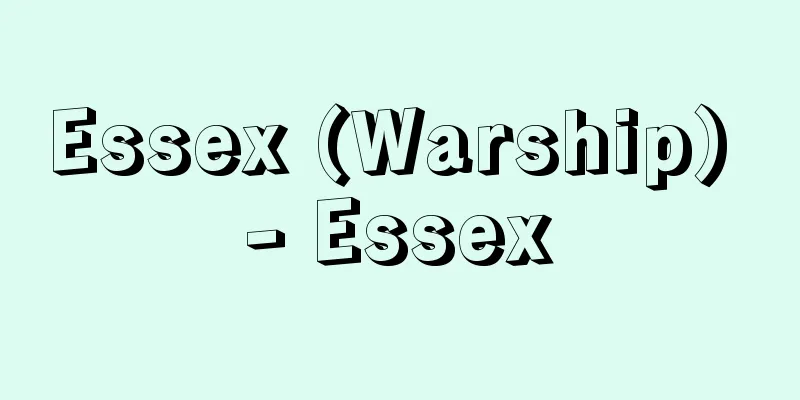
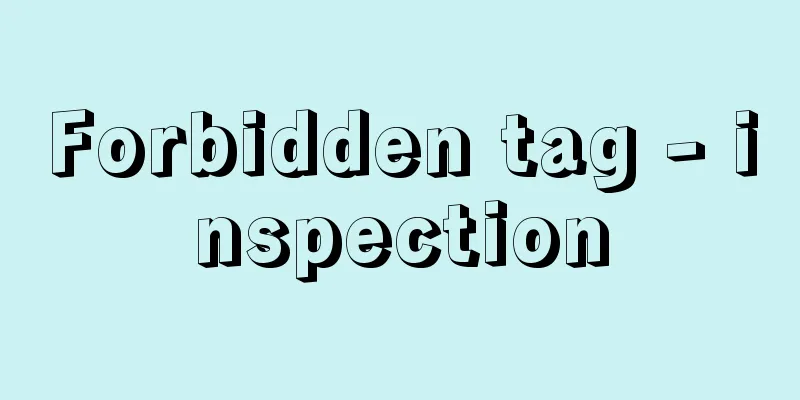
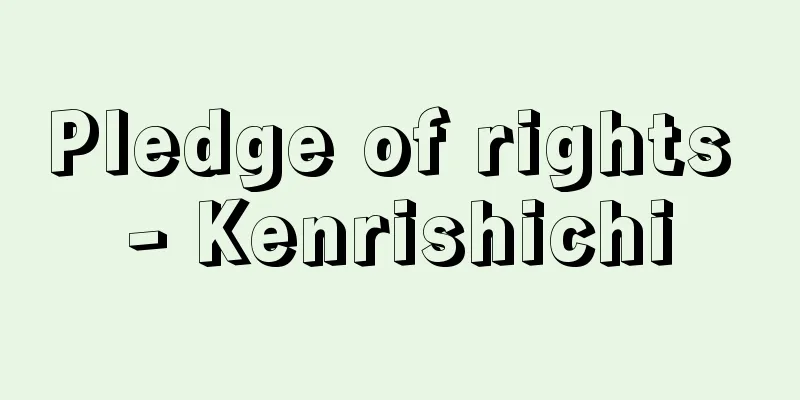
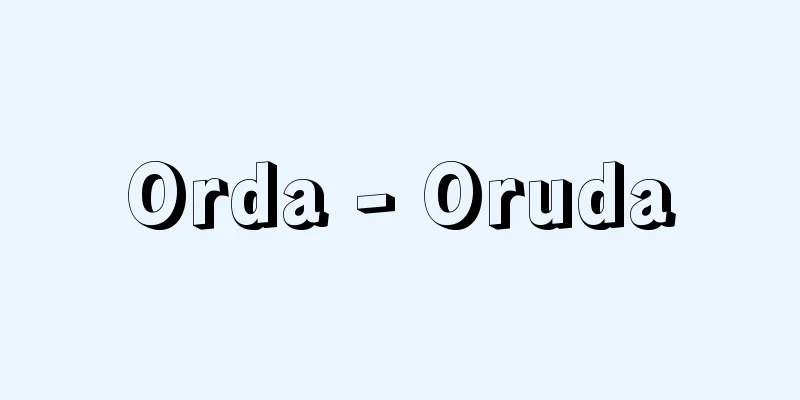



![Kahoku [town] - Kahoku](/upload/images/67cb3da36bae0.webp)
